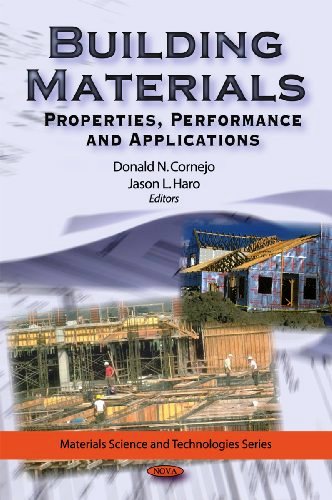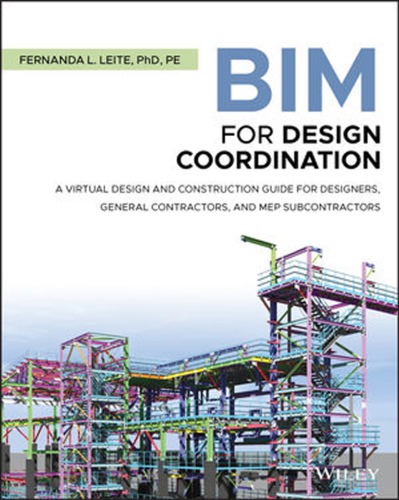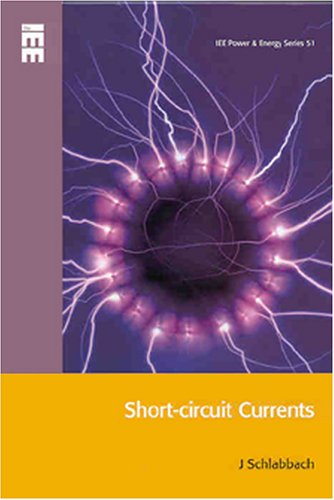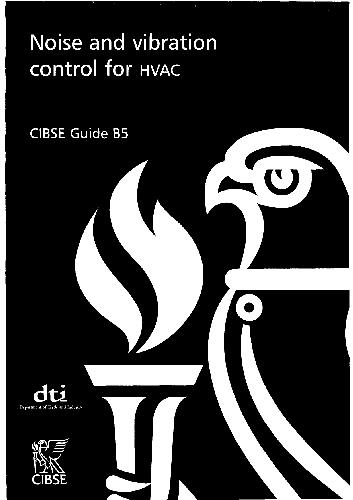| Book Name: | [PDF] Building Materials Properties Performance and Applications |
| Category: | Civil Engineering Books |
| Free Download: | Available |

| Book Details : | |
|---|---|
| Language | English |
| Pages | 422 |
| Format | |
| Size | 14.1 MB |
Building Materials Properties Performance and Applications
Building Materials Properties, Performance, and Applications by Donald N. Cornejo and Jason L. Haro PDF Free Download
Building Materials Contents
- Syntactic Foams as Building Materials Consisting of Inorganic Hollow Microspheres and Starch Binder
- Salt Weathering of Natural Building Stones: A Review of the Influence of Rock Characteristics
- Study on Adsorption and Thermoelectric Cooling Systems Using Boltzmann Transport Equation Approach
- Microbes and Building Materials
- Determination of Moisture Transport and Storage Properties of Building Materials
- Building Materials and Acoustic Comfort: Simulations, Measurements, and Applications
- Radon Exhalation Rates of Building Materials: Experimental, Analytical Protocol and Classification Criteria
- High Temperatures Behavior of Masonry Structures: Modelization and Parametric Study
- Agricultural Wastes as Building Materials: Properties, Performance, and Applications
- Recycled Aggregate Structural Concrete: A Methodology for the Prediction of its Properties
Preface to Building Materials Properties Performance and Applications
Building material is any material that is used for a construction purpose. Apart from naturally occurring materials, many man-made products are in use.
The manufacture of building materials is an established industry in many countries and the use of these materials is typically segmented into specific specialty trades, such as carpentry, plumbing, roofing, and insulation work.
This new book presents a wide variety of research on issues facing the building industry today. A study on the use of syntactic foams as a building material is presented.
The acoustic performance of building materials with respect to their insulative properties is also analyzed.
Other topics include the performance of building stones in relation to salt weathering, the behavior of building materials submitted to fire, the problem of microbe invasion into building materials, and a study to develop a series of experimental methods to determine the moisture transport and storage properties of building materials.
Chapter 1 – Syntactic foams as building materials are studied. Various manufacturing parameters contributing to syntactic foam composition in relation to the ‘pre-mold’ method were identified and inter-related.
An equation based on lattice unit cell models with the minimum inter-microsphere distance concept for a relation between volume expansion rate of bulk microspheres in aqueous starch and microsphere size was derived and successfully used to predict experimental data.
A simple method for estimation of syntactic foam density prior to completion of manufacture was suggested.
Shrinkage of syntactic foam precursor was discussed in relation with different stages such as slurry, dough, and solid.
Also, the ‘post-mold’ buoyancy method involving mixing starch particles and ceramic hollow microspheres in water is discussed in relation to composition and properties.
It was found that starch particles tend to adhere to hollow microspheres during mixing, forming agglomerations.
A transition in the formation of mixture volumes in water was found to take place at a calculated relative density value of 1 for an agglomerate consisting of multiple starch particles and one microsphere.
A Simple Cubic cell model for the starch-microsphere inter-distance was adopted to quantitatively explain various effects on starch content in agglomeration such as hollow microsphere size, an initial bulk volume of hollow microspheres, and water volume.
Further, the following were found for syntactic foams: (a) volume fraction of starch in the foam is of linear relation with starch content in a binder for a given experimental data range and (b) shrinkage of syntactic foam precursor is relatively high for small hollow microspheres with high starch content.
Compressive failure behavior and mechanical properties of the manufactured foams were evaluated. Not much difference in failure behavior or in mechanical properties between the two different (pre- and post-mould) methods was found for a given binder content in syntactic foam.
The compressive failure of all syntactic foams was of shear on a plane inclined 45° to the compressive loading direction. Failure surfaces of most syntactic foams were characterized by debonded microspheres.
Compressive strength and modulus of syntactic foams were found to be dependant mainly on binder content but independent of microsphere size.
Some conditions of relativity arising from properties of constituents leading to the rule of mixtures relationships for compressive strength and to the understanding of compressive/transitional failure behavior were developed.
The developed relationships based on the rule of mixtures were partially verified. Novel sandwich composites made of syntactic foam core and paper skin were developed.
Interface bonding between syntactic foam core and paper skin was controlled by varying starch content. Two different microsphere size groups were employed for syntactic foam core manufacturing.
Properties of skin paper with starch adhesive were found to be affected by the drying time of the starch adhesive.
Skin paper contributed to increasing up to 40% in estimated flexural strength over syntactic foams, depending on starch content in adhesive between syntactic foam core and paper skin.
A small microsphere size group for syntactic foam core was found to be advantageous in the strengthening sandwich composites for given starch content in the adhesive.
This finding was in agreement with the calculated values of estimated shear stress at the interface between paper skin and foam core.
The failure process of the sandwich composites was discussed in relation with load-deflection curves.
The hygroscopic behavior of syntactic foam panels was investigated. Moisture content in syntactic foam was measured to be high for high starch content in syntactic foam panels.
No significant moisture effect on flexural strength syntactic foam panels after being subjected to moisture about two months was found. However, a substantial decrease in flexural modulus was found for syntactic foam panels made of large microspheres although not much moisture effect was found on that of small microspheres.
Chapter 2 – Soluble salts are one of the main decay agents of building materials, affecting both natural and man-made products applied in old and new constructions, endangering cultural significant structures, and thwarting the performance of materials in new buildings.
Salts could promote erosive decay (provoking loss of material, mainly by physical action but there are also references to chemical attack) and could also contribute to the formation of coatings, such as the (in)famous “black crusts”.
The present review will be focused on the response to salt pollution microscopic of macroscopic features of natural building stones, considering predictions of theoretical models, results of simulation experiments, and field observations.
Several types of rocks (igneous, sedimentary, metamorphic) will be considered, in order to gain information on the influence of textural, mineral-chemical and structural aspects, such as grain size, mineralogical composition (especially relevant to understand chemical susceptibility), presence of heterogeneities,
Natural anisotropy surfaces (such as bedding) and previous weathering state of the stones (weathering state when extracted from the quarry, before application, an aspect that is particularly relevant for igneous rocks, especially granites, since it affects properties, such as porosity and capillary rise kinetics, that control migration of salt solutions and influences the crystallization position of soluble salts).
It is hoped that this review will contribute to identifying susceptible geological features that affect the performance of building stones in relation to salt weathering and, in this way, contribute to the discussion on the basis for recommendations about the selection of building stones, in relation to foreseeable salt contamination conditions.
Chapter 3 – In this chapter, the Boltzmann Transport Equations (BTE) is used to formulate the transport laws for equilibrium and irreversible thermodynamics and these BTE equations are suitable for analyzing system performance that is associated with systems ranging from macro to micro dimensions.
In this regard, particular attention is paid to analyze the energetic processes in adsorption phenomena as well as in semiconductors from the viewpoint of irreversible thermodynamics.
The continuity equations for (i) gaseous flow at adsorption surface, and (ii) electrons, holes, and phonons movements in the semiconductor structures are studied.
The energy and entropy balances equations of (i) the adsorption system for macro cooling, and (ii) the thermoelectric device for micro cooling have derived that lead to expressions for entropy generation and system’s bottlenecks.
The BTE equation is applied to model the adsorption cooling processes for single-stage, multi-stage and multi-bed systems, and the simulated results are compared with experimental data.
This chapter also presents a thermodynamic framework for the estimation of the minimum driving heat source temperature of an advanced adsorption cooling device from the rigor of the Boltzmann distribution function.
From this thermodynamic analysis, an interesting and useful finding has been established that it is possible to develop an adsorption cooling device as a green and sustainable technology that operates with a driving heat source temperature of near ambient.
Moreover, the Onsager relations are applied to model the thermoelectric transport equations and, after coupling with Gibbs law and BTE, the temperature-entropy flux derivations are further developed and presented the energetic performances of thermoelectric cooling systems.
Chapter 4 – Microbes – including bacteria, fungi, algae, and lichen – are successful invaders of all types of building materials in the indoor and outdoor environments on modern and historic buildings.
With respect to the numerous problems caused by biogenic spoilage and deterioration of building materials our contribution will present (a) the most important groups of chemoheterotrophic and chemolithotrophic bacteria, cyanobacteria, fungi and lichens occurring on a rock, plaster, mortar, paint coatings, plasterboard, and other building materials;
(b) the mechanisms and destruction phenomena caused by microbes ranging from mere esthetical spoilage to significant material losses (c) the environmental factors – humidity, Ventilation, nutrient availability – enhancing or inhibiting microbial growth,
(d) the state of the art methods for detection and analysis of biodeterioration organisms and processes especially highlighting the molecular techniques as e.g. genetic fingerprinting of microbial communities and single microbial species (DGGE, RFLP) or quantification of microbes in materials by real-time PCR,
(e) possible strategies for antimicrobial treatments and preventive measures with a focus on the pros and cons of hydrophobic treatments, nano-technology based paint coatings, and novel disinfectants.
The contribution will aim to researchers in the fields of material sciences and building physics as well as to practitioners of building industries, thus descriptions of microbiology and molecular techniques will be given on high quality but generally understandable level.
Chapter 5 – Moisture accumulation within the material of a building envelope can lead to the poor thermal performance of the envelope, degradation of organic materials, metal corrosion, and structure deterioration (Künzel, 1995; Pel, 1995; Qin et al. 2007, 2008a).
In addition to the building’s construction damage, moisture migrating through building envelopes can also lead to poor interior air quality as high ambient moisture levels result in microbial growth, which may seriously affect human health and be a cause of allergy and respiratory symptoms.
Also, human perception of air quality and the transport of volatile and semi-volatile organic compounds through building materials depends largely on the relative humidity.
Therefore, the investigation of heat and moisture transfer in porous building materials is important not only for the characterization of behavior in connection with durability, waterproofing, and thermal performance but also building energy efficiency and avoiding health risk due to the growth of microorganisms.
Chapter 6 – Acoustic comfort is increasingly necessary for a view of rising levels of noise pollution, especially in medium-sized towns and large cities.
According to the WHO, noise pollution today is the type of pollution that affects the largest number of people in the world, second only to air and water pollution.
Urban growth, along with the ever-increasing number of circulating vehicles, greatly contributes to the higher levels of urban noise emission. Inhabitants of large cities all around the globe complain about noise, reporting irritability, rising blood pressure, headaches, sleep disorders, stress, etc.
Considering that traffic and neighborhood noises (neighbors, construction work, religious buildings, commercial, cultural, and leisure activities) disturb people in their homes, it is conceivable that the sound insulation provided by façades and walls are inadequate, resulting in poor acoustic comfort.
This chapter analyzes the acoustic performance of building materials with respect to their insulative properties. This performance is evaluated through in situ measurements of sound insulation, or alternatively, by computational simulation.
This alternative is presented through real case studies in homes. The values found are compared with the limits set by International Standards for acoustic comfort.
Techniques for measuring parameters that characterize building materials for acoustic comfort are presented and discussed. This chapter, therefore, offers an overview of building acoustics and acoustic performance of materials.
The advantages and disadvantages of each of these approaches are discussed, as are technical standards in different countries.
Chapter 7 – The strict correlation between indoor radon exposure and potential health hazard to occupants is well known.
The indoor radon concentrations mainly depend on radon exhalation from surrounding soil, but also on exhalation from building materials and radon in the domestic water supply.
The radon emanating from building materials achieves a larger relevance in some areas of the world, where rocks enriched in radon precursors, are used in the construction industry, either as cut-stone or in a granular form to prepare the cement.
The parameter that better expresses the indoor accumulation of radon released by geological materials is the radon exhalation rate.
With a view to this, it is very important to study factors that influence the phenomenon and to standardize the experimental procedure to measure radon exhalation rates.
An experimental set-up to measure simultaneously 222Rn and 220Rn release from building material is presented. The method makes use of a continuous monitor equipped with a solid-state alpha detector, in-line connected to a small accumulation chamber.
Parameters controlling exhalation rates are discussed: temperature, air mixing, humidity, and particle size. Guidelines for a standard experimental protocol are advanced and a tentative classification of building materials is proposed on the basis of radon exhalation rates required to reach legal indoor radon action levels.
Chapter 8 – The behavior of building materials submitted to fire points out the important role of water content. The experimental results show in some cases that a significant plateau appears at a given temperature (around 100 °C).
The specificity of this study is to presents a coupled hydro-thermal model based on the mechanics of partially saturated porous media. Such a model is used to simulate a thermal loading up to 1100 °C applied on a thin wall. The effect of the phase-change phenomenon is taken into account.
The model can also take into account the effect of vapor pressure on the position of the plateau.
A parametric study is achieved illustrating the influence of initial water content, intrinsic permeability, and the form of isotherm sorption curve on the hydro-thermal response of a thin wall.
Compared to the experimental curves obtained in Scientific Center and Technical of Building (CSTB France), the predicted results for the phase-change phenomenon by the hydro-thermal model are in accordance with the experimental observations.
Chapter 9 – While the recycling of low added-value residual materials constitutes a present-day challenge in many engineering branches, attention has been given to cost-effective building materials with similar constructive features as those presented by materials traditionally employed in civil engineering.
Bearing in mind their properties and performance, This chapter addresses prospective applications of some elected agroindustrial residues or byproducts as non-conventional building materials as a means to reduce dwelling costs.
Such is the case concerning blast furnace slag (BFS), a glassy granulated material regarded as a by-product of pig-iron manufacturing.
Besides some form of activation, BFS requires grinding to fineness similar to commercial ordinary Portland cement (OPC) in order to be utilized as a hydraulic binder. BFS hydration occurs very slowly at ambient temperatures while chemical or thermal activation (singly or in tandem) is required to promote acceptable dissolution rates.
Fibrous wastes originated from sisal and banana agroindustry as well as from eucalyptus cellulose pulp mills have been evaluated as raw materials for reinforcement of alternative cementitious matrices, based on ground BFS.
Production and appropriation of cellulose pulps from collected residues can considerably increase the reinforcement capacity by means of vegetable fibers. Composites are prepared in a slurry dewatering process followed by pressing and cure under saturated-air conditions.
Exposition of such components to external weathering leads to significant long-term decay of mechanical properties while microstructural analysis has identified degradation mechanisms of fibers as well as their mineralization.
Nevertheless, these materials can be used indoors and their physical and mechanical properties are discussed aiming at achieving panel products suitable for housing construction whereas results obtained thus far have pointed to their potential as cost-effective building materials.
Phosphogypsum rejected from phosphate fertilizer industries is another by-product with little economic value.
Phosphogypsum may replace ordinary gypsum provided that radiological concerns about its handling are properly overcome as it exhales radon-222, a gaseous radionuclide whose indoor concentration should be limited and monitored.
Some phosphogypsum properties of interest (e.g., bulk density, consistency, setting time, free and crystallization water content, and modulus of rupture) have indicated its large-scale exploitation as a surrogate building material.
Chapter 10 – Structural concrete made with recycled aggregates from construction and demolition waste is an eco-efficient solution to reduce both the production of waste and the depletion of natural non-renewable materials.
Even though this material shows great potential as an alternative to conventional concrete (made with primary aggregates), its large-scale use has been hampered by a lack of regulation and technical documentation.
Furthermore, some production procedures hinder the use of recycled aggregates under normal waste collection conditions.
In this Chapter, the specific problems of preparing concrete with recycled aggregates are addressed and the properties of recycled aggregates versus primary (natural stone) aggregates are compared.
A general methodology to predict the long-term performance (in terms of both mechanical properties and durability) of concrete made with recycled aggregates using the corresponding performance of equivalent conventional concrete (reference concrete) is proposed and validated.
The approach employed includes an international literature review and a summation of experimental campaigns monitored/supervised by the author. T
his methodology allows the early estimation of the properties of concrete made with recycled aggregates based on the properties of the aggregates mix and of young concrete, which can be used both by the structural designer and the contractor, thus effectively removing a barrier to the widespread use of this material
Building Materials: Properties, Performance, and Applications PDF
Author(s): Donald N. Cornejo, Jason L. Haro (eds.)
Series: Materials Science and Technologies
Publisher: Nova Science Publishers, Year: 2009
ISBN: 1607410826
Download Building Materials Properties Performance and Applications PDF Free.
Download
Related More Books
See More POST On : Engineering Books









![[PDF] Draw Buildings and Cities in 15 Minutes Draw Buildings and Cities in 15 Minutes pdf](https://www.freepdfbook.com/wp-content/uploads/2021/06/Draw-Buildings-and-Cities-in-15-Minutes-218x150.jpg)








![[PDF] Digital Image Processing An Algorithmic Introduction Using Java Digital Image Processing An Algorithmic Introduction Using Java](https://www.freepdfbook.com/wp-content/uploads/2022/06/Digital-Image-Processing-An-Algorithmic-Introduction-Using-Java.jpg)




![[PDF] 43 Years JEE ADVANCED + JEE MAIN Chapterwise & Topicwise Solved Papers 43 Years JEE ADVANCED (1978-2020) + JEE MAIN Chapterwise & Topicwise Solved Papers Physics PDF](https://www.freepdfbook.com/wp-content/uploads/2022/03/43-Years-JEE-ADVANCED-1978-2020.jpg)

![[PDF] Problems in Physical Chemistry for JEE (Main & Advanced) Problems in Physical Chemistry for JEE (Main & Advanced) Free PDF Book Download](https://www.freepdfbook.com/wp-content/uploads/2022/03/Problems-in-Physical-Chemistry-for-JEE-Main-Advanced.jpg)
![[PDF] Engineering Physics (McGraw Hill)](https://www.freepdfbook.com/wp-content/uploads/2021/05/bafc8c2685bb6823a9c56134f7fba5df.jpeg)

![[PDF] Engineering Chemistry By Shashi Chawla](https://www.freepdfbook.com/wp-content/uploads/2022/05/Theory-And-Practicals-of-Engineering-Chemistry-By-Shashi-Chawla-free-pdf-book.jpeg)
![[PDF] Chemistry: An Introduction to Organic, Inorganic & Physical Chemistry Chemistry: An Introduction to Organic, Inorganic & Physical Chemistry](https://www.freepdfbook.com/wp-content/uploads/2022/04/Chemistry-An-Introduction-to-Organic-Inorganic-Physical-Chemistry.jpg)
![[PDF] Essentials of Physical Chemistry Essentials of Physical Chemistry Free PDF Book by Bahl](https://www.freepdfbook.com/wp-content/uploads/2022/04/Essentials-of-Physical-Chemistry-bahl.jpg)
![[PDF] Biological control of plant-parasitic nematodes: soil ecosystem management in sustainable agriculture Biological control of plant-parasitic nematodes: soil ecosystem management in sustainable agriculture](https://www.freepdfbook.com/wp-content/uploads/2022/05/Biological-control-of-plant-parasitic-nematodes-soil-ecosystem-management-in-sustainable-agriculture.jpg)
![[PDF] Human Anatomy: Color Atlas and Textbook Human Anatomy: Color Atlas and Textbook Free PDF Book](https://www.freepdfbook.com/wp-content/uploads/2022/05/Human-Anatomy-Color-Atlas-and-Textbook.jpg)
![[PDF] Concepts of Biology Book [Free Download]](https://www.freepdfbook.com/wp-content/uploads/2022/05/Concepts-of-Biology.jpg)
![[PDF] Essentials of Biology [Free Download] Essentials of Biology Free PDF BOok Download](https://www.freepdfbook.com/wp-content/uploads/2022/05/Essentials-of-Biology-Free-PDF-Book-Downlaod.jpg)
![[PDF] Human Biology Book [Free Download]](https://www.freepdfbook.com/wp-content/uploads/2022/05/PDF-Human-Biology-Book-Free-Download.jpg)


